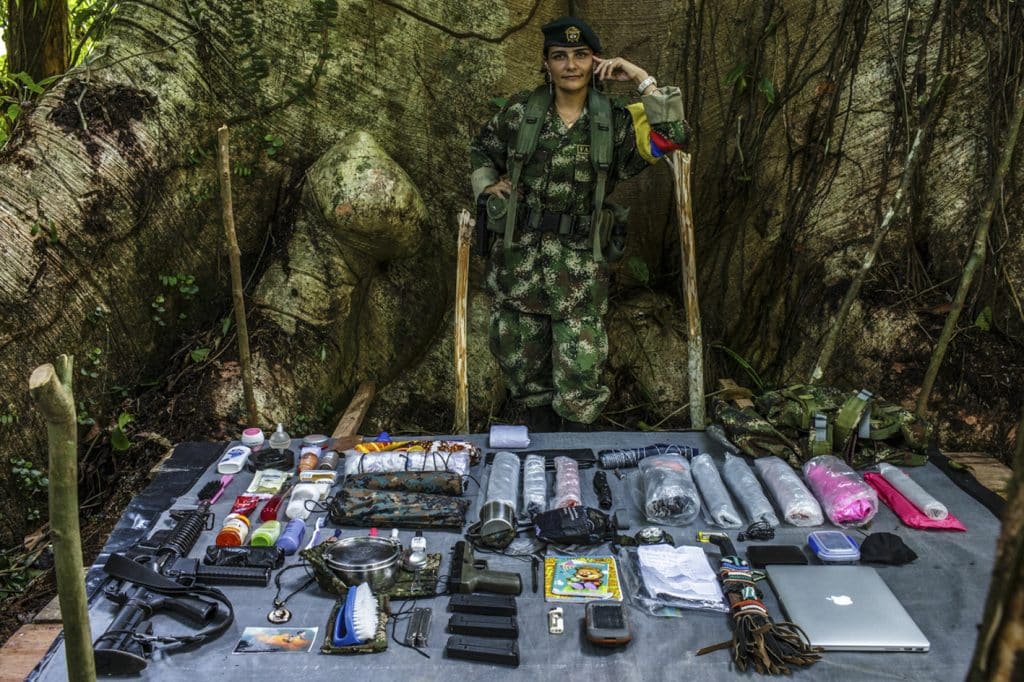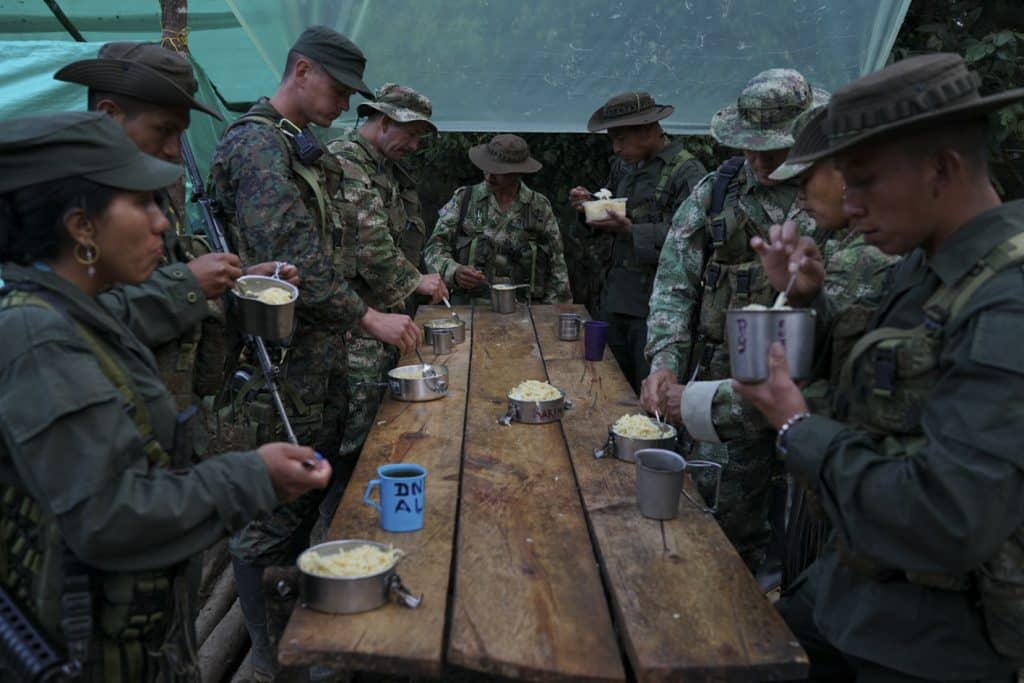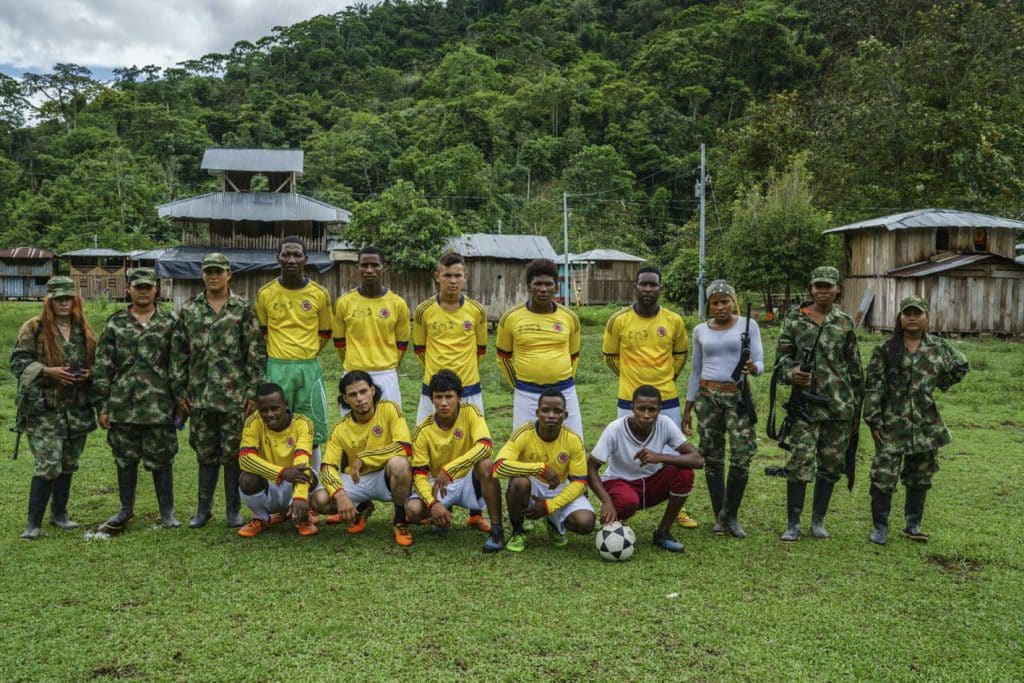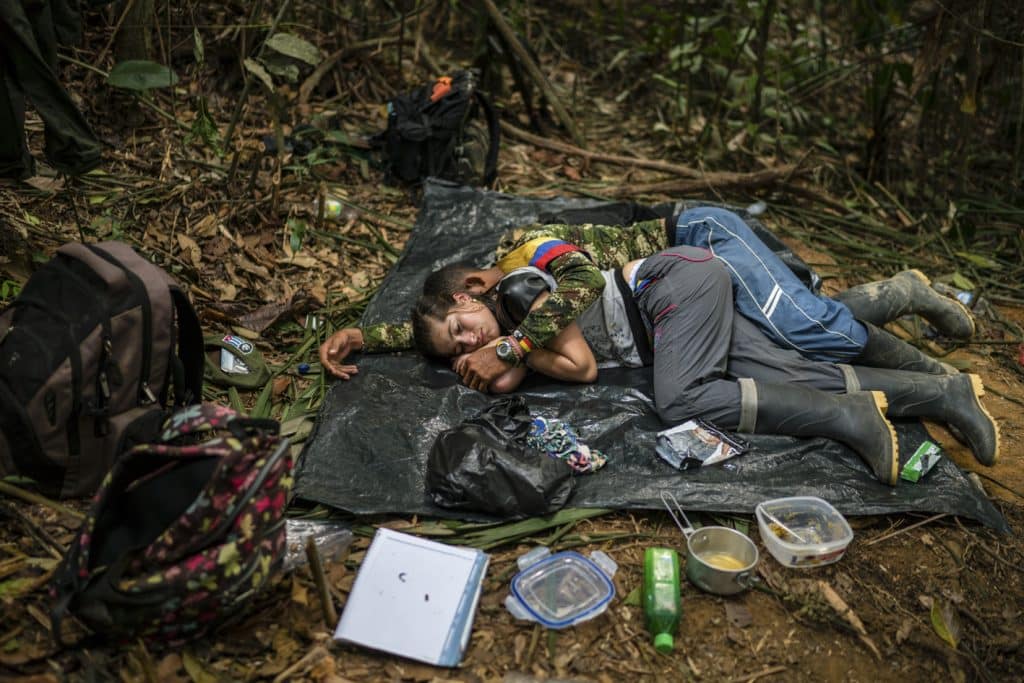The Colombian photographer Federico Rios Escobar spent some ten years in the Colombian jungle documenting the daily life of the Revolutionary Armed Forces of Colombia (FARC). He recalls: “Green. Everything was green: the river, the jungle, even the sky. Each trip was a leap into the unknown: underground contacts; encrypted messages; nameless places not marked on any map; interminable odysseys by canoe, motorcycle, mule, and on foot. Entire days of wandering across the mountains and rivers of Colombia.” The history of FARC is half-a-century-long struggle against the Colombian government—a war that has resulted in more than 250,000 deaths, 120,000 disappeared, and 6 million displaced persons.
Created in 1964, the FARC brought together different groups of peasant guerrillas who demanded social rights and then the overthrow of the government. The ensuing war pitted the communist National Liberation Army (ELN), allied with the FARC, against the army and far-right paramilitary forces. As negotiations began in the 1980s, FARC leaders were assassinated by law enforcement, right-wing paramilitaries, and drug traffickers. The war continued. Considered then as a terrorist group by the United States and Europe, the FARC financed their movement after the fall of the Berlin Wall by drug trafficking and kidnappings, notably the highly publicized kidnapping of the French-Colombian politician Ingrid Betancourt.
In his book Verde, published by Raya Editorial, Federico Rios Escobar chronologically lays out his images from his life in the jungle: “I have lost track of the number of times I hung my hammock and took it down. It was my home in the jungle for many years, whether it was cold or hot, rain or shine. I was in it when sick, and it was my refuge in moments of anxiety. Some nights, I looked toward the sky with desperation and fear. Other nights I fell asleep confident in the hope of peace.” Federico followed the guerrillas on their journeys, through moments of tension and joy; he photographed families, budding loves, mothers, and their children. He documented the daily life of these women (40% of FARC fighters were women) and men who, round the clock, lived on high alert. In particular, he took portraits of the four guerrilla fighters who survived from the creation of the movement.
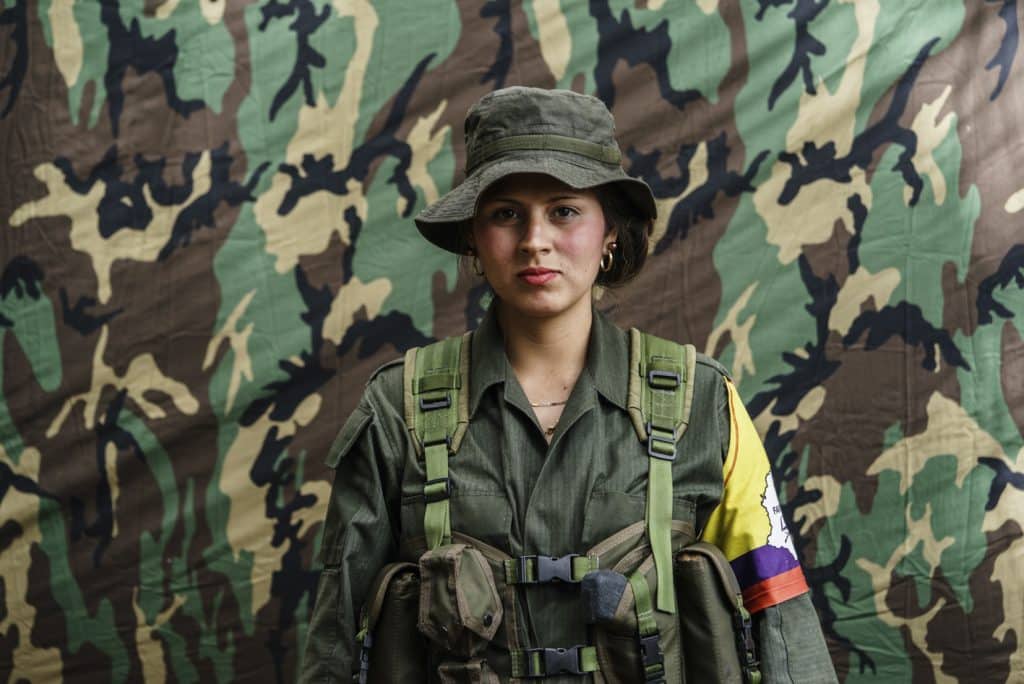
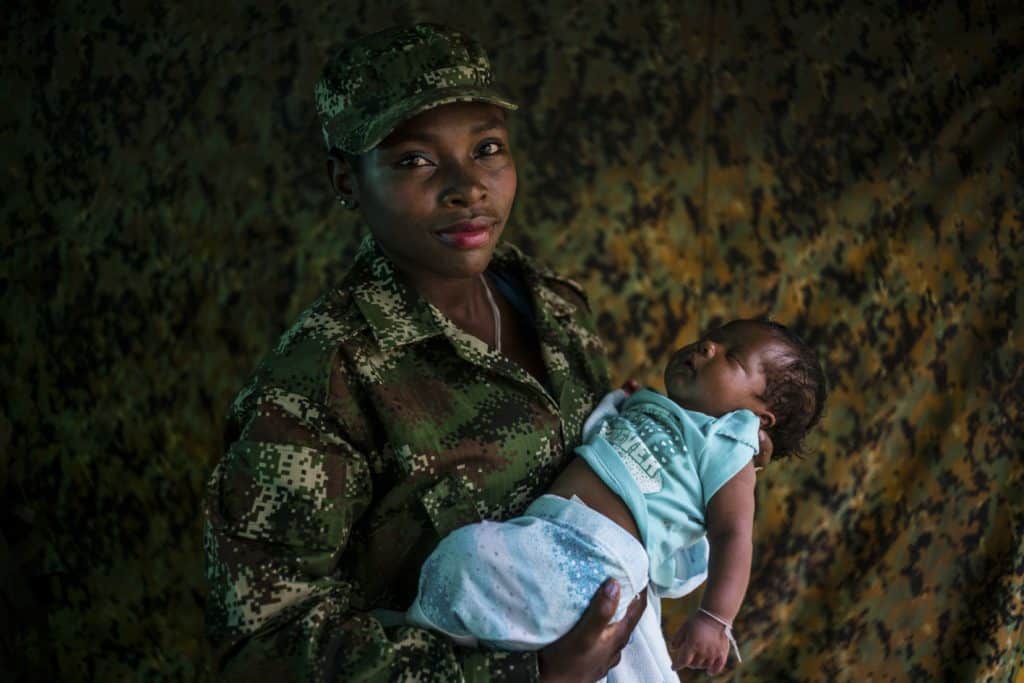
In 2012, the FARC and the Colombian government began formal peace talks and signed a historic, definitive bilateral ceasefire agreement in 2016. Federico was in the jungle during this period. “The war in Colombia was much more than an armed conflict between the FARC and the government; but the agreement to disarm and reintegrate more than 13,000 guerrilla fighters into civilian life, and end fifty-two years of conflict, was an important decisive step toward peaceful existence.” Alejandro Gavira, who served as Minister of Health and Social Welfare during the negotiations, writes in his Introduction to Verde: “This is a book about Colombia, about our tragedy, and our hope for a different future. It is a book about war, about recent attempts at peace, about the (almost existential) need to care for, and understand, our biodiversity, and about the imperative to build a different future in which weapons will never again be an instrument of inclusion.”
Despite the hope that this peace agreement brought to the country, years later, both some of the FARC and the paramilitaries have not yet fully disarmed. At the bottom of the last page of the book, the photographer wrote the following lines, as if to signal that much of the road to peace is still to be traveled: “At the time of printing this book, 259 former combatants, more than 1,147 social leaders, and 80 environmental leaders had been killed in Colombia in the three and a half years following the signing of the peace agreement, according to Indepaz. In the same period, nearly 800,000 hectares of the jungle have been cleared in the country, according to Ideam.”
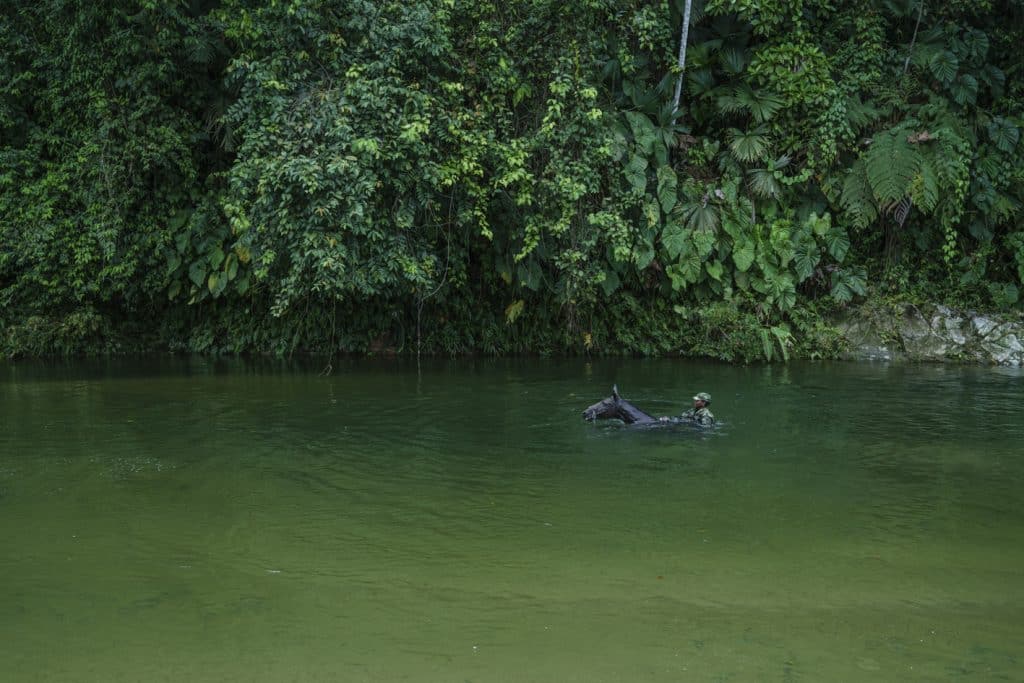
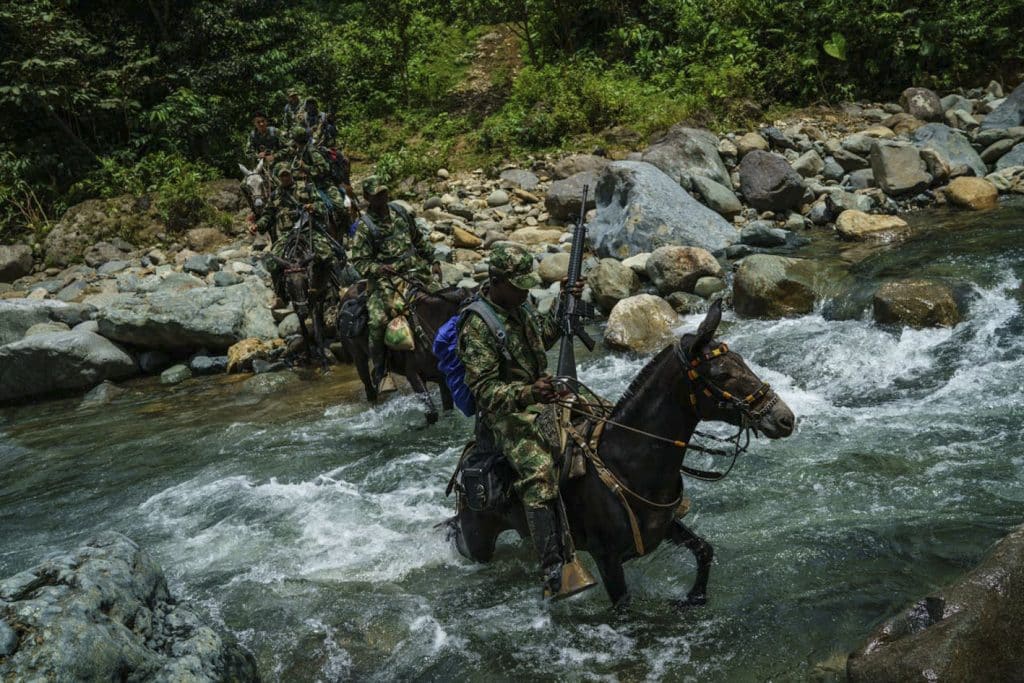
Federico Rios Escobar, Verde. Raya Editorial, $43.24, 324 pp.

